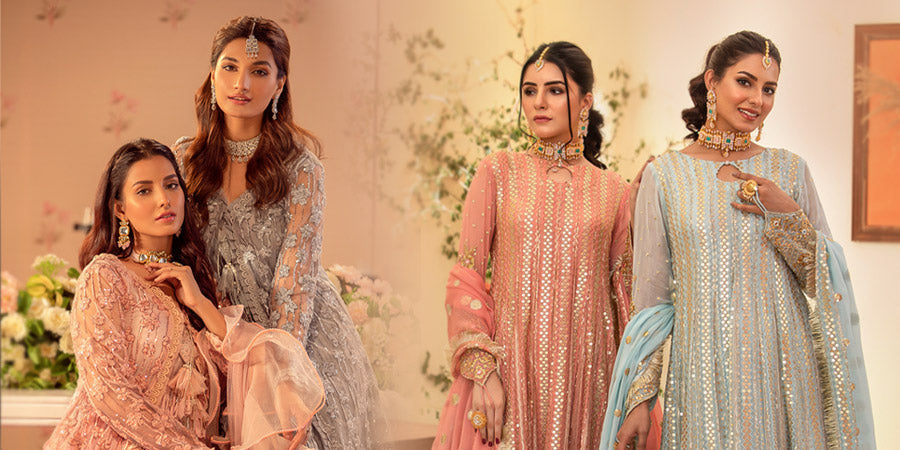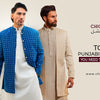What Is the Difference Between Indian and Pakistani Kurta
- by Chic Ophicial

Kurtas are a popular traditional costume in South Asia, with notable distinctions involving Indian and Pakistani variations. Both have a long tunic and loose pants but Indian kurtas often have bright colors and detailed designs, showing off cultural variety. Pakistani designer kurta are usually plain, with softer shades and simple decorations, focusing on comfort for daily use. Knowing Indian and Pakistani kurta small differences helps to better appreciate the cultural identities of each style.
Design Distinctions: Indian vs. Pakistani Kurtas
Indian and Pakistani kurtas present different cultural looks with their colors and designs. Indian kurtas have bright patterns and rich embroidery, while Pakistani kurtas use a more subtle, muted color scheme with simpler decorations, showing personal tastes and heritage.
- Indian and Pakistani kurtas display distinct tailoring styles. Indian kurtas offer diverse cuts and intricate details for self-expression, while Pakistani kurtas emphasize sophistication with streamlined, flowing designs.
- Indian and Pakistani kurtas have special designs and traditional methods. Indian kurtas have bright block prints and detailed patterns, while Pakistani kurtas have light motifs and good fabrics, showing the culture of both countries.
- Kurtas are important in clothing for both India and Pakistan and can be worn for casual or formal occasions. In India, they vary in length from knee to ankle, paired with jeans or palazzos. Pakistani Women's Fashion prefers overall longer kurtas for events, often below the knee, paired with elegant trousers or a dupatta. Silk as well as cotton materials are appropriate over an extensive selection of events, reflecting the kurta's adaptability and value in culture.
Fabrics and Textiles: What Sets Them Apart?
Kurtas from India and Pakistan emphasize cultural fabric preferences. Indian kurtas use soft cotton for everyday wear and luxurious silks for formal events, highlighting regional craftsmanship. Pakistani kurtas prioritize quality materials for elegant draping.
- Both Indians and Pakistanis like the cotton and silk kurtas. The comfortable wears in their daily usages are of cotton. Silk is put on only at occasions. In India, lots of prints can be found but in Pakistan, attention has been provided to fine fabrics.
- India and Pakistan feature ornate embroidery techniques that include zardozi and handwork. The kurtas of Indians include brilliant designs but traditional Pakistani clothing mainly focus on hand embroidery work.
- In India and Pakistan, fabric choices for kurtas are influenced by seasonal needs. Summer calls for breathable materials, while winter sees heavier fabrics like silk and wool. Both countries also use khaddar and silk for versatility.
Cultural Context: When and Where to Wear - Indian and Pakistani Kurtas
Wearing kurtas can enhance appreciation of the traditional garment in India and Pakistan. Kurtas hold cultural significance and vary in usage depending on the occasion. In India, vibrant colors and intricate designs are perfect for weddings and festivals, while in Pakistan Festive Outfits for Women comprise elegant cuts and understated embellishments make kurtas suitable for various settings. Ultimately, kurtas reflect the rich cultural traditions of both nations.
- In India, festivals are a colorful celebration with kurta as a key element. During Diwali and Eid, families don intricately embroidered kurtas that reflect regional traditions, like bright, embroidered kurtas in Punjab or mirror work kurtas in Gujarat. Such attire symbolizes joy, cultural heritage, and individual style.
- Kurtas are absolutely a must for formal and traditional events like weddings and Eid celebrations in Pakistan. These are elegant and sophisticated dresses, and often made up of the finest fabrics that include silk, with fine embroidery, which reflects perfect tradition and modernity.
Everyday Wear: Casual Styles for Daily Life - Indian and Pakistani Kurtas
Kurtas are not only for festivals in India and Pakistan but also to be worn daily. Wearing kurtas with jeans or leggings will provide a very informal yet stylish look. Knees-length kurtas made from lighter fabrics with simple patterns are quite comfortable and elegant to wear in an office or for leisurely purposes.
Color Palettes: Expressing Identity through Hues
Color is essential in the cultural significance of kurtas in India and Pakistan, expressing identity and traditions. The hues in Luxury Casuals for Women reflect emotions, traditions, and seasons, making each kurta unique. Indian kurtas are bold, celebrating diversity, while Pakistani kurtas embrace sophisticated tones. Understanding these colors helps choose the perfect kurta and represent cultural narratives in both countries.
Kurtas come in all colors and colors of India. During Diwali, you'll see a lot of bright reds, yellows, and greens, whereas blue, white, traditional deep reds and golds are used by other regions for different functions. Lighter shades have dominated casual wear while symbolizing the cultural heritage of people as well as their self-expression.
Shopping for Kurtas: Navigating Choices
Shopping for kurtas offers a variety of options, from traditional markets to online retailers. Understanding styles, fits, and fabrics is crucial in finding the perfect piece. Whether for a festive event or everyday wear, being informed ensures the best choice for your wardrobe. Let's explore key considerations for a delightful shopping journey.
- Indian and Pakistani retailers offer a variety of kurtas for all occasions. Popular brands like Fabindia, W for Woman, Chic Ophicial, Biba, Khaadi, Alkaram, and Gul Ahmed provide traditional and modern designs.
- When shopping for kurtas, note sizing differences between Indian and Pakistani brands, with looser fits from Indian brands and more tailored fits from Pakistani ones.
Bridging the Gap: Shared Influences and Common Threads - Indian and Pakistani Kurtas
Kurtas from India and Pakistan share a rich history reflecting centuries of cultural exchange. Despite distinct styles, they share craftsmanship and artistry, showcasing a deep connection to heritage. These Festive Wear transcend borders and embody a shared cultural identity, celebrating their design and the stories they tell. Formal clothes are more than clothes; they inspire and unite.
- The kurta in India and Pakistan reflects cultural exchange from dynasties, invasions, and trade routes, blending techniques and aesthetics.
- Contemporary fashion blends Indian and Pakistani styles, combining bold prints with elegant silhouettes. Social media and fashion shows display diverse Pakistani asian clothes celebrating unity, creativity, and cultural heritage richness.
The End Note:
Indian and Pakistani kurtas are more than clothing, representing cultural diversity in South Asia. From historical roots to vibrant colors and designs, kurtas symbolize shared heritage. Embracing differences while uniting through fashion, wearing kurtas honors tradition and connects us across cultures, celebrating the beauty of two rich heritages.








